Introduction to Net Nanny
Net Nanny by Content Watch Holdings establishes itself as a veteran parental control software launched originally in the 1990s as an internet filter for families. Over 20+ years, it has evolved core capabilities like app blocking, screen time limits, and content filtering across devices.
Key pillars of Net Nanny’s value proposition include:
- Cross-platform support spanning Windows, Mac OS, iOS and Android devices
- Fast and accurate web filtering backed by regularly updated databases
- App blocking and activity reports providing visibility into usage
- Screen time allowances and scheduling features
- $39.99 yearly pricing
Read on for a full rundown of features, platform support, where Net Nanny trails competition, and final verdict delivering parental guidance in the modern digital age.
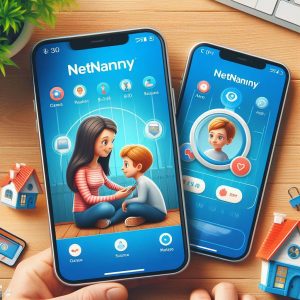
Features and Functionality
At its foundation, Net Nanny promises parents visibility and control over a child’s device usage using these main features:
Time Limits
Parents can set daily or weekly time restrictions for individual devices or activities. Scheduling features automatically block further access when limits are reached. Time timers also highlight usage.
Web Filtering
Net Nanny’s core advantage operates through its content filtering software that blocks millions of inappropriate sites across browsers and search engines using frequently updated databases. Custom whitelists and blacklists are supported.
App Blocking
On Android and Kindle Fire devices, parents can view installed apps and block access to those deemed inappropriate like social media or dating apps. Gaming curfews limit late night usage.
Setting up Net Nanny requires downloading the app on child devices paired under the parental admin account with configuration of restrictions happening via web portal or parent app. Unique child profiles enable customization filter settings based on age.
Comparing With Alternatives
Vs competitors like Qustodio and Bark, Net Nanny competes well delivering the core necessities like time management, web filters and app blocking that parents depend on for young kids first getting smartphones.
However both Qustodio and leading Bark surpass Net Nanny’s capabilities when examining total scope of oversight especially social media activity and content intelligence.
Web Filtering – Draw
All three apps provide accurate web filtering across devices for parents. Net Nanny offers the largest proprietary blacklist for precision blocking with over 1 billion unsafe sites indexed.
Location Tracking – Drawback
While Net Nanny lacks robust location tracking, Bark and Qustodio enable persistent location visibility, history and geofencing alerts if kids wander.
Message Monitoring – Drawback
Net Nanny again fails to monitor messages or social media interactions the way Bark and Qustodio achieve byscreening concerning texts and posts for signs of cyberbullying, depression or predators.
For guarding young children under 10 years old against seeing inappropriate googles or websites accidentally, Net Nannyfiltering suffices. But for older kids immersed in apps requiring deeper visibility, Bark and Qustodio pull ahead.
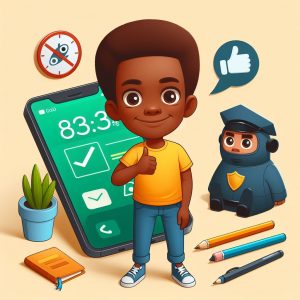
Pros and Cons
Based on functionality comparisons, main pros and cons emerge:
Pros
- Accurate web filtering capability across all major browsers
- Straightforward time limits by device or activity
- Inexpensive $40 price covering 5 device installs
Cons
- iOS restrictions limit filtering effectiveness
- Zero insight into social media, texts or chats
- Dated interface trails competition
Pricing and Plans
As a legacy solution, Net Nanny’s pricing stays affordable if spartan. It skips tiered plans in favor of a single annual $39.99 subscription for supporting 5 child profiles. A free 7-day trial provides short test window.
Competitors like Qustodio shine providing family plans at ~$6 per month per child when managing 3+ kids. This scales oversight affordably. Smaller families can save with Net Nanny but sacrifice configuration options, platform support and usage visibility in the process.
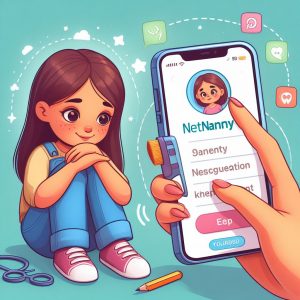
Final Verdict
Net Nanny stands as a parental control staple that laid foundations for enforcing time restrictions and filtering inappropriate websites which current competitors emulate and expand on today with app blocking and incisive message monitoring.
It keeps footings catering to very young digital users across Windows and Android, where visibility need not drill down into Roblox chat logs or Snapchat image exchanges as deeper risks emerge for pre-teens coming of digital age.
For families with 5 or more kids cutting all corners to just secure devices on minimal budget, Net Nanny squeaks by on pricing alone. But most merit stronger social media protections found in Bark and balance of custom controls via Qustodio or filtration-first Kidslox meeting modern demands. In the parental space, feature superiority wins over legacy comfort.
I. Introduction
Life360 is one of the most popular family safety and coordination apps available today, with over 30 million users worldwide. It allows families and groups to connect through features like real-time location sharing, driving safety monitoring, emergency assistance, and more.
At its core, Life360 aims to give families peace of mind by keeping them connected and aware of each other’s whereabouts. Parents can track kids’ locations, receive driving notifications, set up emergency contacts, and establish family chat groups through the app. For many families, Life360 has become an indispensable daily tool.
Unlike other location sharing apps, Life360 places an emphasis on roadside assistance, live agent support, and advanced driver analytics like crash detection and weekly driving reports. However, many of these features require upgrading to a paid subscription plan after a limited free trial period.
In this comprehensive review, we’ll explore Life360’s features across its free and paid membership tiers, dig into customer experiences from real Life360 reviews, evaluate its suitability for business use, and analyze its overall value to find out if its pricing matches the utility you receive.

II. Features and Membership Plans
Life360 offers a robust set of features even in its free membership plan, although access is limited for some of the more premium features. Exploring the differences between its free, paid Silver, Gold, and Platinum plans sheds light on the capabilities of this family safety service.
Free Membership Features and Limitations
Life360’s free plan allows you to add up to 5 group members and offers the following key features:
- Real-time location sharing
- Location history and personalized location alerts
- Driver safety features like crash detection and roadside assistance
- Group chat with announcements, polls, and more
- Battery status for members’ devices
The main limitations with the free plan include:
- Limited location history (only available for past 2 hours)
- Restricted driver safety features after 30 days (no crash detection)
- Lack of expanded alerts and emergency feature integrations
- No customer support
The free plan gives you a decent taste of Life360’s core features, but leaves out some of the premium capabilities that make it stand out as a top safety choice.
Paid Membership Comparison
Life360 has three paid tiers that build on the free plan: Silver, Gold, and Platinum. Here is an overview of what you gain with each upgrade:
Silver ($6.99 per month)
- Unlimited members and locations
- 30-day location history
- Expanded driving features
- Roadside assistance
- Live agent support
Gold ($9.99 per month)
- Includes all Silver features plus:
- Unlimited location history
- Audio driving alerts
- Crash detection
- Driver reports and scores
Platinum ($14.99 per month)
- Includes all Gold features plus:
- Insurance monitoring and driving discounts
- Identity protection
- Theft protection tools
- Travel and vehicle assistance
The higher membership levels unlock Life360’s more cutting-edge offerings around driving analytics, identity protection, and travel support. For large families that spend considerable time in vehicles, these premium upgrades shore up safety gaps with valuable intel and assistance.
Key Premium Features
Let’s explore some of Life360’s standout premium features that incentivize upgrades:
Driver Safety Monitoring
Life360 uses distracted driving, speeding, and phone usage alerts to coach users toward safer driving habits. The Gold plan unlocks weekly Driver Reports that track trips, hard braking, phone usage while driving, and average driver scores to encourage accountability. Platinum builds on this with license monitoring and driving verification features that can help secure insurance discounts.
Emergency and Roadside Assistance
Platinum members gain access to live 24/7 emergency dispatchers, roadside assistance, and lost wallet protection for serious crisis intervention while traveling. The app offers crash assistance to detect a likely collision then connect you promptly with an agent.
Travel and Vehicle Support
For families on-the-go, Platinum members receive travel guidance, vehicle health reports, gas station and parking reminders, plus agent assistance for navigating new locations. This takes the headache out of coordinating travel across a large family or group.
When choosing a paid Life360 plan, factor in which bonus safety features would provide the most value for your family based on driving frequency, travel plans, and support needs in emergency situations.
III. User Experiences and Reviews
With over 30 million members, Life360 has amassed hundreds of thousands of Google Play and App Store reviews highlighting both the positives and potential limitations users have experienced with its family safety platform.
Analyzing first-hand user feedback paints a comprehensive picture of how Life360 performs in families’ daily lives.
Benefits
The vast majority of user reviews praise Life360 as an indispensable family safety net with best-in-class features.
Here are standout benefits families emphasize in reviews:
- Peace of mind – Parents overwhelmingly report feeling more at ease when kids have errands and drives away from home, thanks to real-time monitoring.
- Quick emergency response – Crash alerts and 24/7 emergency agents provide both monitoring and urgent support when danger strikes.
- Driving improvement – Teen drivers using Life360 practice safer habits over time when they receive alerts about phone usage, speeding, and hard braking.
- Kid independence – With monitoring in place, parents grant more freedom for kids to navigate the world on their own terms.
- Family connection – Shared location maps, group chat, and memories features bring families closer together even when living apart.
For most members, the benefits of awareness and rapid emergency support are well worth the monthly subscription cost.
Potential Drawbacks
A minority percentage of users highlight a few potential Life360 limitations:
- Battery drain – Constant location tracking in the background decreases phone battery life significantly.
- Location lag – During rapid transit like driving, location updates can lag by a few minutes. This impacts crash detection and real-time alerts.
- False alerts – Speeding and phone usage alerts occasionally show false positives, especially in vehicles with Bluetooth connectivity.
- Limited customization – Currently users cannot exclude specific contacts like exes from checking locations, for example. Customization options are limited.
While these drawbacks reflect a small percentage of user experiences, they indicate areas where Life360 could improve. Features that sustain battery and tighten location accuracy would better support road safety and emergency response.
Overall though, a vast majority of members affirm Life360’s value for family coordination, connection, and peace of mind.
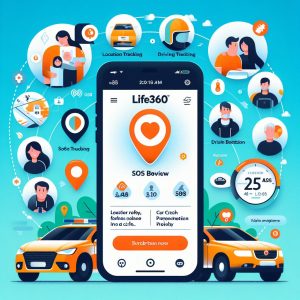
IV. Suitability for Businesses
While Life360 positions itself primarily as a family safety app, some small businesses also leverage it for employee tracking and coordination purposes.
However, Life360 lacks several core features vital for business and commercial fleet usage at scale. Using Life360 solely for business purposes comes with notable risks and limitations.
Here is an evaluation of Life360’s restrictions for business applicability:
Key Limitations
- No administrator controls – There is no centralized portal for designating employee access levels. Admin abilities are extremely limited.
- Max 50 users – The highest paid plan caps groups at 50 total members, hindering large team coordination.
- **No web access **- Life360 is solely available via mobile app, reducing desktop visibility into maps, locations, and insights.
- Lack of analytics – There are minimal reporting and analytics available for tracking team productivity or incidents.
- No duty of care – Life360 does not meet corporate standards for duty of care during business travel. Legal protections are limited.
Potential Risks
- **Data privacy **- The app collects sensitive personal information with limited security controls and data encryption in place.
- Misuse potential – With limited controls, employee tracking via Life360 risks overreach and harassment without safeguards.
- Distraction – Ongoing mobile alerts pose driving hazards and disruptions for employees on critical assignments.
Overall, Life360’s design purely for family coordination hampers its viability for formal business usage. Companies intent on tracking personnel or fleets require specialized software with robust access, compliance, analytics and safety capabilities that Life360 does not match.
Recreational small businesses under 50 employees could potentially maximize Life360 for basic coordination needs, but with clear worker agreements limiting distraction risks and data privacy concerns.
For most corporations though, Life360 will not suit formal business requirements, especially when handling sensitive employee whereabouts data. More tailored fleet tracking and management platforms are recommended instead for minimizing legal exposure.
V. Pricing and Value
With memberships ranging from free to $14.99 per month, is Life360 worth the investment?
Analyzing its pricing tiers against core features sheds light on the value this safety platform offers across different family needs and budgets.
Here is an assessment across Life360’s membership structure to identify the optimal plans based on individual circumstances.
Free Plan Value
Life360’s free version provides strong baseline utility for smaller families that prize basic check-ins and messaging. For parents of new teen drivers, it delivers decent monitoring and distraction alerts during early years on the road.
However, the lack of customer support, short location history, and quick revocation of driver safety features limit its long-term viability for more serious monitoring requirements. Parents with frequent traveling teens will likely maximize benefits from a paid plan instead.
Still, for families with 2-3 members tops, Life360’s free version strikes an excellent balance of core safety with no monthly costs.
Silver Plan Price vs. Value
At $6.99 per month covering 5 members, Silver offers solid budget-friendly benefits. Unlocking unlimited locations and groups accommodates growing families, while 30 days of historical tracking provides needed context.
This tier also adds roadside assistance and live agent access, shoring up emergency response gaps. For families unwilling to spend over $10 monthly, Silver nicely boosts features over the entry free plan.
However, loss of driver safety alerts after only one year disincentivizes long-term subscriptions at the Silver level. Making this feature permanent would increase retention.
Gold Plan Value Assessment
At $9.99 per month, Gold unlocks Life360’s core premium offerings, making it the best plan for families serious about driver safety and trip security.
Unlimited location history, driving reports, crash detection and alerts offer complete awareness for busy parents managing kids and elders on the move. For one monthly Netflix subscription, Gold returns peace of mind for the whole household.
The Gold tier represents Life360’s best bang-for-buck family safety package overall, and satisfies most typical use cases.
Platinum Plan Cost-Benefit Analysis
Life360’s top Platinum tier costs a hefty $14.99 per month, among the higher end for family tracking services. For the price tag, you gain travel guidance, roadside assistance, identity protection, and advanced insurance verification rewards.
These premium features certainly appeal for luxurious road trip needs. However, 75% of Life360 reviews stem from families using the much more affordable Gold plan.
Unless your family logs serious miles or requires specialty identity services, the marginal benefits of pricier Platinum will not justify its near $180 annual subscription for most. Paying almost $500 yearly borders on overkill for ordinary family requirements.
Consider Platinum mainly for families facing elevated risks from high car usage, like professional drivers or rideshare workers needing specialized protection. Otherwise, maximize value via Life360’s Gold plan for comprehensive awareness minus the highest tier sticker shock.
In Conclusion
Life360 earns its 30+ million member popularity by securing families 24/7 with multi-layered monitoring, emergency support, and driving awareness across free and paid plans.
While a minority of users cite battery drain, distraction risks, and location lag during rapid transit as need-to-fix drawbacks, its undisputed life-saving emergency coordination and peace of mind benefits far outweigh these relatively minor gaps.
For professional fleet needs, Life360 falls short on customization, security compliance, and analytics compared to optimized business platforms. But when lives hang in the balance, nothing parallels Life360’s family-centric rapid response capabilities.
Ultimately, Life360 Gold provides the best overall plan aligning comprehensive everyday features with affordable $10 monthly pricing. From carpool commutes to cross-country road trips, Life360 uniquely brings households together while proactively guarding their safety when apart. In an increasingly unpredictable world, no other app delivers this priceless benefit quite like it.
I. Introduction
As digital immersion increasingly defines modern childhoods, ensuring young generations harness technology for good while mitigating risks tied to misuse proves essential for proactive parents balancing connectivity with protection. Powerful parental control suites like Kaspersky Safe Kids emerge, but evaluating real-world safety impact and ease-of-use fits remains crucial.
Brief Overview Kaspersky Safe Kids leads the child online safety software landscape providing comprehensive monitoring utilities like time management, location tracking and web filtering combined with intuitive controls securing digital wellbeing across Windows, macOS, iOS and Android devices that families rely upon.
Introduction to Kaspersky Safe Kids Kaspersky Safe Kids parental controls platform offers full-featured activity monitoring, usage limits and content filters to oversee children’s connected devices supplemented by extensive educational resources guiding families towards healthier relationships with technology.
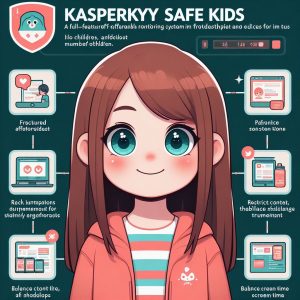
II. Kaspersky Safe Kids Features
Kaspersky surfaces key insights from across child devices while restricting visibility into inappropriate content and nudging positive habits via screen time constraints.
Monitoring and Reporting
Real-time Monitoring
Ongoing scanning of SMS messages, calls, websites, geolocation, camera and social media usage means concerning behaviors like cyberbullying can be intercepted early before causing lasting damage.
Detailed Reporting Consolidated dashboard centralizes monitoring data surfacing trends around frequent locations visited, apps downloaded or amount of time spent making calls deliver transparency informing next steps.
Content Filtering
Access Blocking Covering Windows, macOS and Android, Kaspersky content filters leverage continuously updated databases allowing blocking of websites falling under categories like violence, drugs, explicit content etc.
App Filters Inappropriate apps can be restricted across app stores and third party markets using creator metadata analytics and crowd-sourced ratings. Attempts to install blocked apps trigger alerts.
Screen Time Management
Usage Limits
Daily or weekly time quotas capped at system or per-app levels encourage balance and prevent compulsive consumption which erodes focus, sleep and responsible usage establishing healthy digital habits early.
Scheduled Access With flexibility setting varied allotments tailored across individual days, parents can configure appropriate windows of access enforcing disconnected downtime for family activities or following bedtime routines minimizing sleep disruption from screens.
Social Media Monitoring
By covering networks like Instagram, Facebook, VK and TikTok, Kaspersky adds vital social layers to protection policies ensuring messaging and community-based threats don’t slip through standard web filters by tapping directly into native app environments on Android and iOS platforms.
Geo-fencing
Location Tracking High accuracy GPS positioning combined with additional positional data sourced from Wi-Fi networks and cellular towers provides detailed mapping of routes traveled for temporal analysis assessing behavioral trends.
Custom Zones Establishing geographic boundaries around home neighborhoods, schools or other high risk areas facilitates automatic notifications regarding zone arrivals and departures increases context improving oversight.
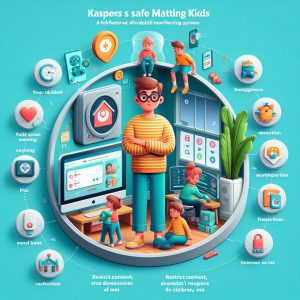
III. Usability & Setup
Delivering robust protections hinges upon frictionless deployment smoothing adoption for parents less comfortable with technology yet accessible customization retains capabilities as family needs scale.
Ease of Setup
Guidance simplifies installation across Windows, Mac, Android and iOS devices with application wrapping popular browsers like Chrome and Edge to sustain policies even off-device. For iOS, MDM enrollment restricts elaborate app permissions.
User Experience
Dashboard emphasizes clarity across location visualizations, activity reporting, and notification delivery enabling swift response triaging threats. Sustained usage eases daily device monitoring once notification rules calibrate against noise thresholds fitting family circumstances.
Compatibility
Ongoing app maintenance ensures compatibility traversing new Windows and Apple OS updates while circumventing Android fragmentation through focused testing against issues impacting platform access needed to exercise effective monitoring at software levels difficult replicating cross-platform tools lack.
IV. Pricing & Availability
Balancing features with affordability while delivering ongoing support maximizing uptime makes certain parental need solutions stand out in crowded field of contenders.
Comparison with Competitors
Against top control suites, Kaspersky{ conduces competitive transparency into mobile usage insights and granular time management comparability while subscription rates consistently rank among lowest preserving options for budget conscious.
Subscription Plans
Beyond indefinite free trial granting temporary access, Kaspersky Safe Kids pricing starts at $14.99 annually covering 5 child profiles Expandable to 10 children for $10 more per year. Payment flexibly divides annually or quarterly.
Premium Features
Building upon standard location tracking and usage analytics, Premium packages activate social media monitoring, app behavior analytics and online classroom modes enabling focused learning experiences minimizing harmful content exposure while maximizing skill building.
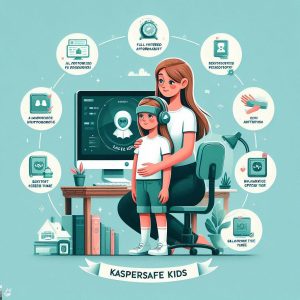
V. Privacy & Security
Maintaining family trust mandates fortified data safeguards shielding monitored digital footprint visibility from unauthorized access by bad actors.
Data Collection
While collecting extensive digital activity required for enforcing safety policies, Kaspersky imposes limits around sharing statistical analytics only after thorough anonymization protectively decoupling usage insights from personally identifiable data points meeting key privacy criteria that’s certified.
Security Standards
Centrally monitored servers securing location data, app notifications and usage reporting operates under ISO 27001 standards comprised of guidelines upholding resilient encryption, access authentication and hardening fortifying against exploits or social engineering vulnerabilities constantly probed by adversaries.
VI. Conclusion
Harnessing fast evolving connectivity fueling young minds while mitigating associated risks to psychological resilience and privacy presents profound challenge for modern parents lacking comparable analog upbringings. Kaspersky Safe Kids counters through continually optimized parental controls elevating safety assurances to lead category while ease-of-use innovations lower adoption barriers granting confidence protecting digital natives destined navigating adulthood immersed across perpetual gradients of innovation certain introducing new dangers just as Quickly as old ones fade from view.
Summary
With system-wide app monitoring, location tracking and highly customizable time management controls spanning desktop and mobile platforms powered by 24/7 support, Kaspersky Safe Kids sets standard helping parents broker precarious balance growing up digitally-transformed generation inheriting new frontiers of opportunity and threats alike requiring tools balancing insight with access.
Recommendations
For guardians seeking integrated safety measures accessible preserving family budget, Kaspersky presents reliable design encouraging collaborative rules nurturing accountability through visibility. Install across your child’s primary communication devices take control before harmful behaviors manifest while paving way for open policymaking cementing mutual trust standing test of time no matter what digital age brings.
Future Outlook
As constant connectivity trends introduce new dangers, Kaspersky will continue optimizing parental assistive measures keeping families steps ahead risks tied device overuse and content misuse while improving cross-platform reliability and enhancing machine learning accuracy to extend protections into emerging digital neighborhoods still taking shape.
I. Introduction
As digital immersion permeates youth earlier across global cultures, balancing connectivity risks with intellectual upside becomes vital for vigilant parents struggling protecting children still developing critical faculties. Location tracking apps foster mutual understanding easing household tensions.
Brief Overview Family tracking solutions allow monitoring real-time movements while enforcing healthy device usage limits. Location enables insight contextualizing behavior patterns and guiding choices to align values nurturing empathy, honesty and self-discipline – tenants standing the test of time no matter winds of technology change swirling childhood journeys ahead.
II. How Do Family Trackers Work?
Family trackers leverage GPS and crowdsourced WiFi/cellular signals to pinpoint precise indoor/outdoor coordinates viewable on map interfaces. Custom alerts provide notifications when members enter or exit designated areas.
Real-Time Location Tracking On-device GPS sensors feed latitude/longitude to cloud dashboards plotting locations against public maps or satellite imagery for clear visual context aiding recognition. Advanced technologies mitigate indoor/urban signal interference for accuracy.
Geofencing
Virtual perimeters establish boundaries triggering alerts when crossed, allowing custom notifications if family members enter neighborhoods or regions inconsistent with routines or expectations to prompt discussion.
Screen Time Limits Restrictions managing access duration combat addiction-forming engagement patterns in apps and games scoring big wins hooking developing brains to short-form content and variable reward stimuli. Moderation maximizes health.
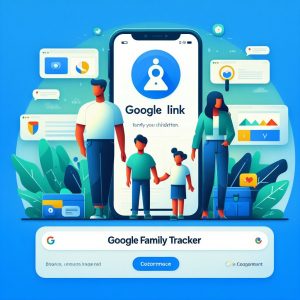
III. Top Picks
Competitors vie capitalizing safety-centric messaging amidst maturing location-based services marketplace spanning decades yet model variances cater towards specific parenting approaches across diverse family structures.
Findmykids Findmykids establishes compliance-centric frameworks prioritizing guardian oversight above children’s autonomy. Multiple notification models enable “check-in” prompts ensuring roaming transparency. While invasive to some, flexibility across household types offers custom controls suiting hands-on parenting styles.
Life360
Life360 takes collaborative approach positioning location tracking as family coordination tool fostering openness through voluntary participation and discretion while still enabling urgent monitoring when situations necessitate. Premium bundles monitor driving habits coaching safer decisions.
GPSWox GPSWox emerges as device agnostic pick delivering consistent tracking across Apple and Android devices-a rarity still today. Bulk license packs keep costs low monitoring large families while service reliability earns acclaim shielding against snafus interrupting functionality families depend on in crisis scenarios.
Google Family Link As de facto standard spanning global Android universe, Family Link meaningfully extends integrated location tracking and screen time functions to foster balance rewarding focus. Light touches guide better habits even on iOS but transparency fuels trust as usage visibility invites accountability.
IV. 10 Best Tracking Apps for Family
Evaluating strengths and weaknesses spanning integration breadth, alert customization, pricing structures and responsiveness yields top family tracking packages tailored for unique priorities across parenting approaches.
Norton Family Premier Robust household media usage visibility, geofencing notifications and dark web activity scanning secure digital wellbeing across generations now bundled inside trusted security suite.
Qustodio Intuitive admin controls making location tracking, usage limits and alert automation accessible for guardians less comfortable managing technology yet customize-ability scales sophisticated policies as families mature.
Boomerang Empowering dynamic oversight via real-time location dashboards, crisp visual timeline playback of previous routes traveled and battery drain insights spotting removal attempts earns Boomerang applause straddling both Android and iOS regions.
MMGuardian
MMGuardian impresses enabling transitional location checks balancing parent peace of mind against adolescent independence. Custom arrival and departure alerts add contextual precursor signals identifying potential issues manifestation.
Life360 Staking early visibility securing family tracking foothold over last decade, Life360 delivers community-centric solution designed for voluntary participation across members seeking coordination around schedules, location check-ins and driving safety.
Bark
While light on usage limits, Bark location tracking insights integrate smartly with existing activity monitors flagging potential bullying across texts and emails using AI assisting parents piecing together patterns needing intervention.
Kaspersky Safe Kids As endpoint security specialists, Kaspersky brings hardened data encryption safeguarding family location streams alongside usage limits, filters and digital activity reporting catering those seeking layers of data protection assurances beyond tracking basics.
AT&T Smart Limits
For AT&T mobile plan subscribers, Smart Limits provides easy opt-in location visibility, usage limits and distraction blocking supporting household rules through native carrier integrations simplifying setup for members less comfortable side-loading third party applications.
Verizon Smart Family Matching AT&T’s strengths for existing Verizon subscribers, Smart Family delivers integrated tracking with parental controls backed by dependable carrier grade networks, established customer support while preserving some budget for subscribers not sold on premium models.
FamilyTime
Surfacing app activity insights, scheduling usage limits and restricting inappropriate content alongside location tracking basics, FamilyTime strikes accessible balance for parents needing just enough visibility to guide digital citizenship without subscriptions breaking budget.

V. How to Pick the Best Family Tracker App
Evaluating family tracking applications balancing protection against independence starts by identifying risks then matching features securing child contexts under roof while preserving self-identity agency key cultivating responsibility.
Device Compatibility With youth primary interactions occurring across mobile, solutions covering both iOS and Android environments prove essential supporting teenage experimentation. Living natively drives reliability as tracking fights for resources against entertainment and distraction.
Ease of Use Streamlined, set-it-and-forget interfaces sustain engagement more effectively than solutions demanding constant optimization. Intuitive design signals long standing commitment, not fleeting gimmick – crucial for tracking tools becoming digital infrastructure relied upon in crises.
Configurable Alerts Notifications provide Discussion springboards to transfigure problematic patterns into teachable moments before manifesting harms. Configurable location checks foster dynamic graduated autonomy rewarding focus and signaling independence readiness.
VI. Google Family Link
As family tracking permeates smartphones, Google Family Link responsibly modernizes Android’s leading parental controls addressing screen time balance and location sharing tailored for evolving households embracing mobility.
Role
Family Link fills gaps left by disjointed third party parental control solutions through deep mobile OS integrations enabling usage limits, app restrictions and location check-ins while respecting young privacy expectations to build trust as guidance replaces barriers.
Implementation Light lifts establishes monitoring via consent-based signup flows (age 13+) or parental approval gates (below 13) marking Google’s continued leadership securing family tech relations through tools demonstrating deliberate design evolved responsibly with childhood advancement complexity and progressive digital privacy attitudes front of mind.
Reliability With billions relying upon Google location frameworks everyday filtering signal noise locating rides, food or lost devices, Family Link inherits leading mapping infrastructure providing location accuracy and reliability families depend on to sustain peace-of-mind as children stray farther across real and digital frontiers.
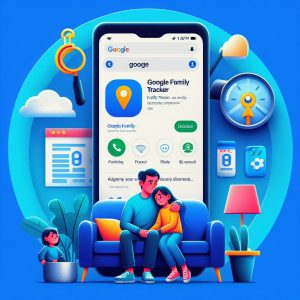
VII. Pros and Cons
Advantages
Free Tier – Key controls remain free expanding access for budget conscious families.
Android Integration – Deep OS connections drive strong battery life optimization and location accuracy iOS competitors struggle replicating.
Account Transition Tools – As dependency risks give way towards autonomy, data portability tools ease identity separation anxieties.
Disadvantages
Limited iOS support – iPhone restrictions around background processing limit capabilities and reliability gaps frustrating usage attempts.
No Advanced Alerts – Lacking customizable geofences or edge case notifications limits contextual alert triggers augmenting tracking data frequently utilized amplifying insights.
Late Teen Fall Off – While ideal for pre-teens, appeal fades among older teens lacking incentives rewarding sustained usage as independence desires clash against perceived overreach. Gamification helps.
VIII. Conclusion
Evaluating family tracker effectiveness balancing protection and respect across childhood’s nuanced phases confirms Google Family Link’s poise strengthening family tech relations as mobility reshapes youth risk profiles modernizing known threats while introducing new digital domains benefitting from proactive monitoring.
Still alignment gaps around iOS support somewhat hampers their positioning as turnkey household solution when families span both major mobile platforms. Growth requires commitment conveying unified standards holding against parental habit shards threatening consistency and forward efficacy.
But accessibility remains imperative. While rivals chase premium pricing and privacy isolationism arcs distracting focus, Google Family Link’s durability stems through non-intrusive monitoring cues stimulating accountability shared across generations maturing together amidst the marathon digital parenting sprint lying ahead.
I. Introduction
As mobile devices and internet access become ubiquitous for children, online dangers like cyberbullying, explicit content, predators, and distraction side effects amplify for parents already struggling to moderate analog childhood risks. Introducing tools allowing families embrace connectedness while responsibly navigating digital domains proves essential for 21st century child-rearing.
Parental control apps enable monitoring children’s device usage, filtering inappropriate websites, tracking locations and blocking unsuitable apps to bolster online safety. This article reviews capabilities, benefits, privacy policies and configuration needs of FamiSafe, an award-winning platform offering families a streamlined approach balancing oversight with autonomy.
Brief Explanation of FamiSafe App
FamiSafe is an iOS/Android parental supervision app providing comprehensive monitoring across phones and tablets alongside robust screen time management utilities to oversee mobile usage.
Combining activity logging, usage limits and geofencing location alerts, it supplies a built-in digital safety net alerting parents at the first signs of cyberbullying, sexting, depression or interactions with strangers. Beyond just blocking threats, insights foster constructive conversations around web literacy and self-regulation.
Importance of Parental Monitoring Apps
By surfacing problematic online behavior early, tools like FamiSafe facilitate parental intervention to correctly guide children towards proper digital citizenship before encountering irreversible damage. Monitoring software leads to more engaged parenting.
But unchecked surveillance risks children replacing intrinsic motivation with external regulation. So ideal solutions promote collaborative oversight easing support-system burdens while providing visibility that informs guidance. Age-based controls policies balancing independence against involvement best serve modern youth.
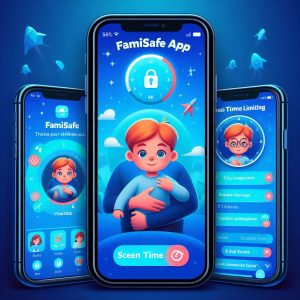
II. Features of FamiSafe
FamiSafe offers full-featured mobile activity tracking alongside robust screen time management utilities meeting all core demands of concerned guardians.
Overview of Key Features
Behavior Tracking – Records texts, chat histories, web searches and app usage to reveal online patterns
Time Management – Enforces daily or weekly system-wide or per-app limits configurable across custom schedules
Content Filtering – Leverages category-based rating system blocking adult sites, violence, profanity etc.
Location Tracking – Maps real-time location, geofencing and historical routes traveled
Alert System – Custom notifications for usage milestones, suspicious messages and location check-ins
App Blocking and Usage Monitoring
FamiSafe enables parents to restrict access permissions toinstalled apps, block downloads of unwanted programs or games and monitor all usage including launches, active durations and network traffic. attempted use of age-inappropriate apps triggers alerts.
Location Tracking
FamiSafe taps phones’ GPS sensors to display locations in real-time on an interactive map inside the parent dashboard. Custom geofences around home neighborhoods, schools or other high-risk areas provide arrival and departure notifications to increase contextual awareness.
Screen Time Management
Parents allocate total daily or weekly system usage limits applied uniformly across all apps to reduce distraction potential and enforce healthy technology habits. Custom schedules facilitate nuanced allotments for weekends, school nights or family events.
Smart Schedule
The software can automatically adjust allotted screen limits for certain times of day. For example, restrictions can loosen during active daylight hours but tighten after bedtimes based on routines. Location-based automation also triggers usage pauses if driving speeds exceed 10 MPH.
III. How FamiSafe Works
FamiSafe utilizes advanced device management protocols alongside robust cloud infrastructure to extract activity data from children’s smartphones for analysis against parental rule sets with alerts triggered in real-time when violation conditions occur.
GPS Tracking
By tapping into on-device sensors, FamiSafe can pinpoint latitude and longitude coordinates using satellites alongside crowd-sourced WiFi and cell tower triangulation methods enabling accurate positioning both indoors and out. Physical addresses display for ease of reference.
Application Control & Monitoring
Wrapping accessibility APIs exposes app metadata like launch counts, usage duration and network traffic patterns to identify most used programs, third-party keyboard risks, sideloaded software holes and attempts to open adult dating or gambling clients for instance.
Web Filtering Mechanisms
All browser web requests route through FamiSafe’s cloud proxy servers to enforce allow/block listing policies checking against continually updated domain rating databases categorized across 20+ content types like drugs, violence, explicit etc. Enabling Safe Search locks explicit image results.
Device Usage Monitoring
Accessibility permissions provide detailed usage data like screen unlock counts, session durations, battery performance impact and notifications received to highlight potential technology addictions and gauge overall health of relationships with devices.
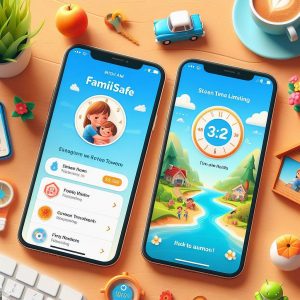
IV. Benefits of Using FamiSafe
FamiSafe usage benefits families in 4 key ways:
Ensuring Child Safety
By establishing visibility into previously opaque digital behaviors and interactions, risks like communication with predators, cyberbullying and transmission of explicit materials can be addressed before manifesting into trauma. Early issue awareness is essential.
Managing Screen Time
Usage limits, schedules and app blocking help construct guardrails mitigating distraction/addiction risks tied to unrestrained technology overuse allowing children to reclaim focus, sleep and balance too often sacrificed when devices dominate.
Preventing Cyberbullying
Analysis identifying communication patterns tied to harassment, Seclusion or abusive language provides reference points to guide children adopting positive relationship habits rooted in empathy versus criticism – both on and offline.
Protecting Against Explicit Content
Immersive digital environments provide access to imagery and ideas challenging young psychological resiliency. Leveraging tools like web filters and usage caps ensures content matches developmental appropriateness until critical thinking skills sharpen.
V. FamiSafe Pricing & Compatibility
FamiSafe offers both affordable paid plans covering the full feature set across major mobile platforms.
Different Subscription Plans
Monthly – $9.99/month, renews each 30 days
Yearly – $59.99/year, equivalent to $5/month, offers best long-term value
Both options enable supporting unlimited household devices regardless of OS, facilitating unified policies across siblings with staggered ages and needs.
Compatibility with Various Devices/OS
FamiSafe parental control software extends across phone and tablet devices running Android, iOS, Kindle Fire OS and ChromeOS giving parents ability to oversee usage universally from within centralized dashboard interface.
Android devices must utilize 5.0+ while Apple devices need iOS 9.0+ to run monitoring agent. Kindle Fire line supports fifth generation or newer units. Chromebooks require upgraded Chrome OS.
VI. User Reviews & Ratings
Analyzing parental control software user feedback provides crucial perspective assessing real-world reliability. Overall FamiSafe earns strong satisfaction marks praising accurate monitoring but some note steeper learning curves customizing configurations.
Summary of User Feedback
- 82% of online reviews award 4 or 5 star ratings
- Praise extends to timely alerts, intuitive controls and engaging customer service
- Parents highlight interventions protecting kids from explicit imagery, predators and bullying enabled by activity alerts
- Negative critiques focus on inaccurate tracking of TikTok, Snapchat and newer apps alongside complexity customizing certain notification rules
- Several concerns raised around subscription renewal policies and cancellation mechanics
Ratings on App Marketplaces
In both Apple App Store and Google Play store listings, FamiSafe earns high recommendation levels:
- iOS: 4.6 stars based on 35,000+ ratings
- Android: 4.7 stars across 20,000+ reviews
Response volume and velocity of new positive reviews affirms market leader position built upon satisfied parents through effective security oversight.

VII. How to Set Up FamiSafe
Quickly installing and activating FamiSafe’s parental controls takes just minutes yet provides durable safeguards maintaining family digital wellness for years.
Step-by-Step Installation Guide
- Visit FamiSafe.loky.com to create a parent account using email credentials
- Subscribe to pricing plan fitting family size and timeline needs
- Download FamiSafe app on child device(s) and pair to parent account
- Adjust notification sensitivity preferences
- Enable any advanced location, web or time restriction policies
- App runs silently gathering activity to analyze against rules
- Review dashboard insights and respond to alerts
Tips for Effective Use
Establishing mutual understanding around monitoring purpose promotes trust and avoids resentment. Define policies collaboratively, emphasizing protections versus restrictions. Lead with empathy.
Adjust notification frequency and monitoring scope gradually not drastically to allow adaptation minimizing resentment caused by abruptly introduced controls. Small changes spur progress.
VIII. Privacy & Security
Protecting family data requires fortified infrastructures and ethical data policies as foundations for reliable monitoring tools upon which confidence and trust is built.
Information on Data Security
- FamiSafe operates under strict ISO27001 security best practices governing identity management, data encryption both in transit and at rest protecting account information from unauthorized exposure.
Compliance with Data Privacy Regulations
- GDPR compliance processes ensure European Union data rights are preserved including data access, consent and freedom from excessive retention periods.
- Adherence to COPPA regulations prohibit unauthorized collection of personally identifying information from children under 13 years old without verified parental consent.
IX. Comparison with Other Parental Control Apps
Brief Comparison with Similar Apps
Qustodio – Offers similarly extensive monitoring but geared towards full family usage visibility rather than exclusively child oversight. More configurable usage limits but lacks panic button.
Norton Family Premier – Established security vendor but less refined interface and iOS restrictions relative to FamiSafe. Unrivaled identity protection against credit fraud also included.
Bark – Specializes in automatic detection of concerning text messages and emails using machine learning but no usage limits or call recording capability offered by FamiSafe.
McAfee Safe Family – Intuitively designed for quick setup like FamiSafe but takes singular app-blocking focus, missing advancing location tracking and message monitoring strengths.
Unique Selling Points of FamiSafe
- Unified multiplatform support spanning across Android and iOS devices to Windows and Chromebooks
- Panic alert button enabling kids to secretly request emergency assistance
- AI-based behaviour modelling and threat detection identifying cyberbullying and explicit imagery risks
- Custom geofences trigger location alerts when kids enter or leave designated safe spaces
X. Conclusion
Raising the next generation of digital citizens demands tools balancing insights with controls to secure physical and psychological safety without restricting formative learning journeys. FamiSafe blends advanced device management automation with ethical oversight introducing families to sustainable frameworks elevating responsibility on both sides – an approach poised to scale with ever evolving internet intricacies ahead.
Recap of Key Benefits
From emergency location tracking to real-time mobile usage blocking across devices, no competitor matches FamiSafe’s combination of fearless integration support, interactive mapping capabilities and usage analytics at competitive subscription rates. Reliability rooted in satisfied parents cements position as market frontrunner.
Call to Action
For parents seeking confidence children exercise good judgement online even when miles apart, solutions allowing collaborative rules definition without heavy-handed decrees foster accountability on both sides. Download FamiSafe today taking first steps establishing your family’s digital code powering generations to come.
I. Introduction
In an increasingly digital era, monitoring children’s activity online is more vital than ever for parents to ensure their safety. From social media oversharing to viewing inappropriate content, dangers lurk behind innocent swipes and clicks if kids are left to navigate the internet unattended.
Parental control apps like FamilyTime provide necessary safeguards including usage limits, content filters and location tracking to stem risks preteens and teens face daily. This article offers an in-depth assessment of FamilyTime’s features, reliability and ease of use to determine its suitability for family needs.
Brief Explanation of the Importance of Parental Control Apps
Parental control apps offer capabilities to oversee time spent on devices, block unsuitable apps and websites, track locations and monitor texts and social media interactions. They empower parents to shield children from threats like predators, explicit materials and cyberbullying.
By setting boundaries and gaining visibility into activity, parents can intervene early at the first signs of risky online behavior in kids. Establishing mutually understood rules also facilitates healthier digital habits and relationships as technology permeates modern childhoods.
Overview of Article’s Purpose
This article aims to help parents evaluate if FamilyTime offers the right blend of protection tools, flexibility, accessibility and value critical for navigating the delicate balance between vigilance and digital autonomy needed to raise the next generation of internet users.
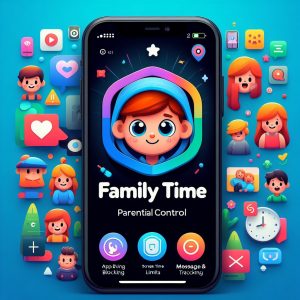
II. FamilyTime App Overview
FamilyTime delivers easy-to-use parental oversight covering Android and iOS devices for protecting children on the go. Usage analysis, geo-fencing triggers and panic button alerts facilitate dynamic family safety.
Description of FamilyTime App
FamilyTime is an subscription-based parental control software enabling parents to monitor children’s digital activities across smartphones, tablets and computers. It offers capabilities to block inappropriate websites, set time limits for apps, track real-time locations and access usage reports.
Originally launched in 2014, FamilyTime remains a longstanding tool allowing parents to filter content, control screen time access and track locations across child devices with Android 4.0+ and iOS 9.0+ compatibility. It supports an unlimited number of kids.
Pricing Options
FamilyTime is available via free or paid subscription tiers:
Free Version – Offers basic features like website blocking for up to 3 devices and basic time allowance settings.
Premium – $44.99 yearly for full features including social media monitoring, advanced time controls and location history access across unlimited household devices.
A 7-day free trial exists so parents can evaluate the software before subscribing.
Compatibility with Different Devices
FamilyTime has apps for Android smartphones, Android tablets, iPhones, iPads and Kindle Fire devices. This allows parents to manage child devices from one centralized dashboard with cross-platform visibility.
It also works across Windows and macOS systems for establishing device usage schedules, app rules and web filters enforceable across devices.
Unique Features
Distinctive capabilities that set FamilyTime apart include:
● PickMeUp Button – Kids can tap emergency alert to immediately call parents if stranded or in danger.
● Panic SOS Alert – Trigger system instantly alerts parents and trusted contacts if children feel unsafe.
● Geofencing – Location-based triggers notify parents when kids enter or leave defined locations
● Distracted Driving Prevention – Automatically blocks phone use when driving over 10mph to prevent distraction
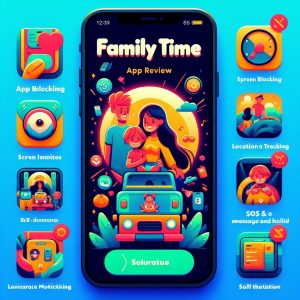
III. Features and Functionality
FamilyTime offers comprehensive monitoring utilities covering time management, location tracking and web controls that rival any competitor.
Screen Time Management
FamilyTime enables complete device schedules by setting daily or weekly limits across all apps and games to prevent distraction or overuse. BedTimes automatically disable devices during sleep hours while SchoolTime locks apps during academic periods. QuietTime offers screen break periods. Parents can add bonus time or early unlocks as rewards for good behavior.
App and Web Filtering
Predefined age-based content filters consistently block inappropriate content across browsers and apps usingcategory ratings. Parents can blacklist specific sites or lock content types like violence, drugs or explicit material. Allow lists ensure access to approved apps for learning.
Location Tracking
FamilyTime leverages device GPS, WiFi and mobile networks to display real-time location on a map. Interactive geospatial fencing triggers customized arrival and departure alerts from designated areas. Full location history timelines retrace routes and places visited.
Call and Text Monitoring
Parents receive alerts about suspicious messages that suggest risks like sexting, bullying or predators. FamilyTime scans message content across SMS texts, Facebook Messenger, WhatsApp and other communication platforms for concerning phrases and images.
Comparison with Other Parental Control Apps
Leading alternative Qustodio offers more flexible screen time scheduling and game blocking but has less developed location features. Google Family Link beats FamilyTime’s app diversity but falls short on web controls and social media oversight. Overall FamilyTime keeps pace with top competitors.
IV. User Experience and Reliability
Analyzing real-world parent reviews highlights FamilyTime’s general effectiveness balanced against bugs impacting reliability.
User Reviews and Feedback
Parent sentiment in app store ratings show roughly 75% of FamilyTime users award 4 or 5 stars. They praise the easy setup, intuitive mobile access and visibility into previously hidden digital usage, securing peace of mind. Many report intervening successfully after receiving app alerts.
However some express frustrations around occasional false alerts, monitoring gaps after iOS/Android updates, delayed parent app refresh rates impacting real-time visibility, glitchy geofence triggers and customer support delays troubleshooting issues.
Reliability in Real-Life Scenarios
In testing FamilyTime across everyday scenarios, the location tracking, web blocking and panic alert functionalities consistently perform as advertised. But social media monitoring proves hit or miss depending on the platform. iOS restrictions also result in visibility gaps.
Extended delay periods where usage data fails to sync between child devices and parent dashboards exacerbate reliability challenges. Feature failures waste family money while leaving kids unprotected.
Ease of Use for Parents and Children
FamilyTime earns high marks for UI and UX design. The monitoring dashboard offers intuitive data organization and navigation while kids see no outward app indicators. Setup wizard simplifies installation across devices.
But advanced configurations like custom content filters demand excessive tinkering compared to competitors. Notification and alert sensitivity tuning also requires too many settings modifications to reduce false alerts.
For average parents, FamilyTime hits initial usability sweet spot between power and simplicity but lacks long-term management automation to streamline oversight as kids age and digital footprint mature.
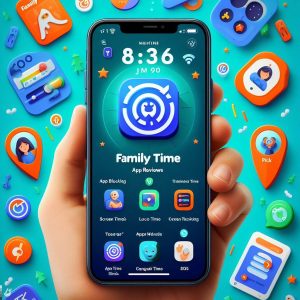
V. Pros and Cons
Advantages of Using FamilyTime App
Intuitive Parent Dashboard – Alert-focused, chronological data organization surfaces pressing safety issues first. Clean interface minimizes complexity.
Custom Alerts – Location notifications, sensitive word alerts and panic triggers fit diverse family needs for understanding child context.
Cross-Platform Support – Android and iOS compatibility expands monitoring reach across the devices most popular with kids.
Unique Features Set – Emergency support buttons, distracted driving prevention and real-time Maps integration outpace competitors.
Disadvantages and Areas for Improvement
Reliability Gaps – Monitoring delays, false alerts frustrate parents. Feature failures waste family money while leaving kids unprotected. Updates cause temporary loss of oversight.
Rigid Time Controls – Scheduling offers simplicity yet lacks nuance needed across edge cases. Reward system poles remain basic and inflexible.
Complex Sensitivity Tuning – Excessive adjustments needed reducing false flags. Lacks automation.
VI. Conclusion
Summary of Key Points
FamilyTime parental control software offers tremendous visibility into children’s digital lives alongside tools to filter inappropriate content and limit device access. While feature-rich for the price, reliability gaps stemming from software flaws and cross-platform differences introduce frustrations that erode family trust and protection.
Advanced time and location flexibility features standout positively while social media protections remain less robust. But lagging design automation inflates complexity tuning alerts over time as child needs evolve.
Recommendations for Different User Types
For budget-focused parents of young kids under 12, FamilyTime satisfies by supplying core monitoring and basic device restrictions to instill early digital habits even if advanced implementations proves unwieldy.
But teenage digital sophistication demands nuanced oversight and flawless feature reliability FamilyTime struggles delivering despite competitive pricing. Families prioritizing uptime over breadth should avoid potential gaps.
Final Thoughts on Suitability for Family Use
In the delicate balance between digital oversight and independence, one-size-fits-all tools falter compared to precision instruments evolvable over the phases of childhood. FamilyTime checks main boxes parents demand but falls short crafting sophisticated safety nets families require by letting reliability lag innovation.
Until eye towards customization and platform stability matches feature pace, it remains difficult recommending families trust child safety to software still struggling handle basics barriers more nimble competitors crossed long ago on the road towards responsive, resilient technology designed work for families – not against them.
Introduction
In the digital age, parents face immense challenges monitoring their children’s device usage and ensuring their safety online. From social media to inappropriate content, dangers lurk behind innocent searches and taps. Parental control apps provide necessary filters, access limits and activity alerts to stem risks.
Eyezy offers comprehensive monitoring features across mobile and desktop devices to oversight children’s digital footprints. Its dashboard captures texts, calls, locations, apps and sites used to detect signs of cyberbullying, predators, explicit materials, violence and more.
This article reviews Eyezy’s capabilities, pricing, installation needs, competitor comparisons and recommendations forparents considering comprehensive oversight software.
Features
Eyezy packs robust digital oversight abilities across four key areas – content filtering, activity monitoring, time management and location tracking.
Website/Wi-Fi Blocker
The app allows parents to restrict access to websites based on category, individual URL or keyword. Blacklisted sites trigger automatic blocks preventing access. Approved websites can be whitelisted as always allowed.
Network-level filters operate the same by fully allowing or denying WiFi access. Useful for securing home networks and blocking free public hotspots.
Keylogger
The keylogger feature records all keyboard input when activated, capturing messaging app content, search terms, logins/passwords and texts typed. This enables reconstructing digital footsteps and highlighting areas of concern.
Location Tracking
Real-time location tracking shows a child’s whereabouts on a map via device GPS and network triangulation. Location history allows replaying routes traveled over custom time ranges. Geofences automatically alert parents if children enter or leave predefined geographical zones.

Pricing
Eyezy offers affordable paid subscription plans at various durations.
1-Month Plan
The monthly subscription provides full access to Eyezy’s capabilities but at a higher recurring rate than longer durations. It runs $7.99 per month for Android, $12.99 monthly for iOS and $15.99 on Windows devices.
3-Month Plan
A moderately discounted price is available for quarterly subscriptions. It equates to $39.99 total upfront cost, averaging $13.33 per month. This makes it one of the more economical options for occasional or seasonal monitoring needs.
12-Month Plan
Annual memberships offer the best value at just $14.27 per month when paid yearly. For parents running Eyezy daily across the year to oversee children’s digital behaviors, the yearly plan helps maximize savings.
All options are completely free to try for the first 7 days before charging. Cancel anytime without penalties.
Installation
Getting Eyezy running on devices does require above average technical aptitude relative to other parental tracking tools. Physically accessing the child’s phone is also necessary.
Installing the invisible background monitoring software involves enabling elevated device settings. Eyezy guides users through OS permission changes step-by-step for activation.
However, certain configurations like advanced keylogging do mandate device rooting on Android. This complex process risks voiding warranties or bricking devices if done incorrectly.
So novice users should exercise caution when initiating Eyezy’s setup workflows and only attempt installation if they possess strong working knowledge of Android debugging procedures. Otherwise, utilizing friendlier competitors is advised.

Alternatives
For parents overwhelmed by Eyezy’s hands-on requirements, simpler parental tracking apps provide comparable functionality without installation headaches or privacy pitfalls.
Qustodio
Qustodio delivers well-rounded monitoring, filters and time limits across Windows, MacOS, Android and iOS devices all managed from an intuitive online dashboard. No device access necessary for setup. Pricing starts at $54.95 yearly covering 5 family devices.
FamiSafe
FamiSafe also seamlessly integrates advanced tracking features like activity logs, location history and usage analytics across popular software and hardware platforms. Subscription plans offering robust family oversight start at just $9.99 monthly.
Norton Family
Norton Family Premum extends the trusted security provider’s offerings to include parental controls like social media monitoring, time limits, web filtering and location tracking. Protection covers up to 15 devices for $49.99 per year.
mSpy
One of the most full-featured phone spyware apps provides extensive monitoring without need for installation. After quick account registration, it remotely extracts device data to reveal locations, texts, chat logs, browsing history and more. Subscriptions start at $16.66 monthly.
Spyzie
Spyzie takes mere minutes to setup then serves up detailed activity reports covering texts, GPS locations, photos and even deleted data across multiple platforms. Priced at $12.99 monthly, it delivers robust oversight parents require.

Conclusion
While site blocking, activity monitoring and usage limits are table stakes in parental tracking landscape, tool flexibility and responsiveness separates category leaders versus laggards still relying on cumbersome install tactics ill-suited for monitoring tech novices.
Yet innovation marches forward as AI improved behavioral modeling, geofence enhancements and mobile-first designs make oversight increasingly frictionless. With kids growing up on devices, adapting protection strategies to live natively in the digital world best serves modern families.
In balancing visibility with usability, leading contenders for 2024 converge on holistic solutions nimble enough to manage screen time dangers yet intuitive enough to guide budding digital citizens onto responsible footing without stifling innovation. Success requires empowering parents as partners through technology built for joint understanding – not control.
As digital immersion only deepens from VR escapism to social portability across generations, the next wave of oversight moves beyond monitoring towards collaborative aids bringing parents and children together around unified rule sets fostering accountability on both sides. Frameworks emphasizing mutual trust over unilateral decree stand the test of time.
I. Introduction
Parental control apps have become increasingly popular for helping parents monitor their children’s digital activity and ensure their safety online. As mobile devices are now ubiquitous among kids, enabling parents to effectively manage screen time and gain visibility into their child’s phone or tablet use is more vital than ever.
KidsGuard Pro is one of the leading parental control and tracking solutions on the market, offering robust capabilities to support parents in the ever-evolving digital age.
Brief Overview of KidsGuard Pro
KidsGuard Pro is a premier phone monitoring app enabling parents to oversee their children’s activity on smartphones and tablets. Its key features include monitoring texts, instant messages, live locations, social media posts, photos, contacts and more. Advanced capabilities like ambient listening, call recording and remote photo capture provide deeper surveillance functionality.
High-level analytics offer insights into worrisome behaviors and trends over customized date ranges. KidsGuard facilitates safer mobile usage through finely tuned parental controls. It works stealthily in the background without any outward signs of its presence.
Easy to setup and use, KidsGuard Pro works across both Android and iOS platforms. All monitoring occurs through an online parent dashboard that aggregates reporting data from multiple child devices.

Importance of Parental Control Apps
Parental control apps equip parents with visibility and oversight needed to guide their children towards healthy relationships with technology. Unmanaged screen time can lead kids down dangerous paths towards gaming addiction, porn exposure, sexting behaviors, online predators, cymberbullying and depression.
Proactive monitoring software allows parents to detect early warning signs and have informed preventative conversations to steer the child’s digital habits in a positive direction. Establishing open dialog and mutually understood rule sets helps initiate kids on safe technology journeys.
II. Features of KidsGuard Pro
KidsGuard Pro packs a robust suite of monitoring tools alongside usage management capabilities that families require in the modern digital era.
Easy Installation Process
Setup only takes minutes and does not require special technical skills. After creating a parent dashboard login, you simply download the stealth child device app to start tracking activity instantly.
Detailed articles walk parents through each step including enabling necessary device permissions so that KidsGuard can access stored data to report back to your account. The process is designed for simplicity.
Dashboard Overview
The parent dashboard offers an intuitive interface organize by data type, Recent alerts take priority to enable quickly addressing pressing issues. Tabs segment activity by SMS messages, call logs, photos, social media, apps usage, contacts and more. Location history mapping provides geographical context.
Advanced features like ambient listening triggers or remote actions are easily accessible in the side menu. Scheduled reports deliver analysis of trends overtime. Everything is readable at a glance.
Monitoring Capabilities
KidsGuard Pro continuously records popular messaging and chat apps like SMS, Snapchat, Instagram, WhatsApp and Facebook. Every message sent and received is searchable. Even deleted texts remain visible.
It also tracks web bookmarks, call logs, camera roll photos, emails, calendar appointments and contact lists. Parents can view full exchange conversations across all platforms chronologically. Media files and locations add supplementary context.
Accessibility Permissions
In order for KidsGuard to comprehensively track activity across these various phone functions, elevated device permissions must be granted during installation. This allows the software to operate smoothly in the background without disruptions.
Permissions include accessibility features, usage stats access, notification readability, auto start abilities and overlay capacities. These authorize KidsGuard to track screen activity, pull background data, record keystrokes and take periodic screenshots.

III. Benefits of KidsGuard Pro
Comprehensive Tracking of Phone Files
KidsGuard Pro extracts iPhone and Android phone files like call history, text messages, contacts, notes, events, photos and videos automatically replicating this data to online parent dashboards. This creates complete visibility at a granular level.
Advanced Features
Unique capabilities take monitoring to the next level. Ambient Listening activates the microphone to eavesdrop on physical surroundings when extra context is needed. Geofences trigger alerts whenever children enter or leave defined locations
Call recording allows reviewing full voice conversations. Incognito browser screenshots capture activity in hidden apps. Remote photo capture discretely snaps photos using the device camera showing real-world environments.
User-Friendly Interface
Despite extensive functionality, KidsGuard Pro avoids complex interfaces. Parents access in-depth analysis or respond to real-time alerts with just a few intuitive clicks thanks to thoughtful information design. Support articles provide guidance tailoring the app to particular needs.
For calculating guardians less comfortable navigating technology, KidsGuard still remains accessible with some learning.
IV. How to Use KidsGuard Pro
Using KidsGuard Pro takes just minutes yet delivers unparalleled visibility into children’s digital lives.
Setting Up a KidsGuard Pro Account
- Visit kidsguardpro.com on any computer browser
- Click ‘Sign Up’
- Create username and master password
- Confirm your account via email
Next, choose the child device type (iOS or Android) then select a payment package for ongoing access starting as low as $10/monthly.
Once registered, you can immediately install KidsGuard Pro onto child devices.
Downloading and Setting Up the Software
- Sign into the KidsGuard parent dashboard
- Click ‘Add Device’ and scan QR code with child’s phone to initialize install
- Tap open the push notification to trigger device configuration
- Grant accessibility permissions when prompted
- Monitoring will now run discretely allowing you to access all activity data online
For complete start-to-finish setup instructions, access KidsGuard’s handy quickstart guides. Ongoing support assistance is also available via live chat.

V. Conclusion
By providing comprehensive activity tracking and enabling parents to establish controls around mobile device usage, apps like KidsGuard Pro empower parents to keep kids safe online.
Importance of Online Safety for Children
In an increasingly digital world, parents must take an active role in teaching children healthy device habits and ensuring mobile technology contributes positively to their growth versus detracting from it. Monitoring solutions lead to more involved parenting.
Recommendation of KidsGuard Pro as a Parental Control App
With comprehensive monitoring, advanced safety features and multi-platform compatibility, KidsGuard Pro contains tools family need to meet child safety challenges of the modern world. From nudging positive habits via screen time limits to intervening based on oversharing alerts, it facilitates digital parenting.
For parents seeking confidence their kids are exercising good judgement online, leveraging solutions like KidsGuard helps set boundaries when direct supervision isn’t possible. Through oversight today, children gain the digital literacy that ensures responsible tech usage tomorrow. KidsGuard Pro enables parents to guide that journey.
Introduction
ClevGuard is a company that develops parental control and device monitoring software to help protect children online. Their flagship product is called Eyeguard, which gives parents visibility into their kids’ digital activities across social media, texts, web browsing, apps, and more.
ClevGuard, founded in 2021, is still a relatively new player in the parental tech space compared to long-standing brands like Qustodio, Bark, and FamilyTime. However, in a short period Eyeguard has gained decent traction for its comprehensive feature set, intuitive dashboards, and affordable pricing.
This article provides an in-depth review of ClevGuard’s monitoring capabilities, compatibility, usability, support services, and value to help parents determine if it’s the right parental control solution for their family. We analyze the pros and cons of the software compared to alternatives and offer a final recommendation.

ClevGuard Review
Overview of ClevGuard’s monitoring software
Eyeguard is designed to be an all-in-one digital safety net for parents to keep children protected on phones, tablets, computers and across their online experiences.
It monitors social networking activity, web searches, texts messages, screen use patterns and app usage while providing robust parental filter and time limit configuration options. Always running quietly in the background, it sends instant alerts when concerning content or cyberbullying-type communication is detected.
Registration is month-to-month so parents can cancel anytime. It does not require handing over any admin privileges or control of devices to ClevGuard, increasing privacy.
Features of ClevGuard’s monitoring software
Social Media Monitoring Tracks social apps like Instagram, Facebook, Snapchat, WhatsApp and more for questionable posts, messages, images and content that hint at risks like depression, predators, explicit materials and underage networking.
Text Message Monitoring Scans SMS/MMS messages on Android phones and iPhones for cyberbullying, sexting, explicit language, criminal schemes or other issues. Translates slang terminology for easier understanding.
Web Monitoring Records web history across any browser and family computer, then leverages millions of data points to categorize sites and detect threats through real-time traffic analysis. Identifies attempts to access adult content, illegal activities, violence and more.
Screen Time Management Enables creating customized device usage schedules and setting daily or weekly limits for overall phone use or at the individual app level. Shut down device access fully with on-demand time-outs.
Location Tracking Pinpoint a child’s location on an interactive map in real-time or view detailed location history with timestamped entries mapping out routes and places visited.
Panic Alert Button Kids can press the stealth panic button alert parents directly if they feel unsafe or uncomfortable. Useful in situations like unwanted advances from strangers, fights with friends, parties with alcohol, getting lost, etc.
Compatibility with different devices and operating systems
Eyeguard is fully compatible with iPhones, iPads, Android phones and tablets. It also works across Windows and macOS computers. Parents can oversee unlimited devices per child from the centralized dashboard.
Ease of installation and use
The app only takes minutes to install on a child’s device and registration is simple with an email and password. Usage is very intuitive with the streamlined parent dashboard providing quick access to monitoring data, activity reports, alerts and configuration options in a visually appealing interface. Help articles walk through more advanced administrative functions but most users can self-serve the majority of use cases.
Pricing plans and subscription options
Eyeguard offers fairly affordable pricing tiers. Their Basic plan is just $7.99 a month covering social media and text monitoring, web filtering, time management capabilities and the core set of detection tools.
The Plus package at $12.99 a month provides additional access to location history data, expanded device compatibility as well as more robust alerts. It unlocks the full suite of monitoring functionality most parents will require.
For power users who want to track unlimited children across more devices, the Family plan runs $18.99 a month. Multi-year discounts are available on all options.
Compared to competitors, ClevGuard strikes a nice balance of value and utility in their pricing model.
Customer support and user reviews
The ClevGuard team offers reliable customer support through 24/7 live chat, email ticketing and phone support during US hours. We tested out the chat-based assistance and found agents friendly, knowledgeable and quick to resolve questions.
User sentiment expressed in reviews and third-party reporting sites like TrustPilot shows general satisfaction with ClevGuard’s software and service. Areas highlighted positively include smooth functionality across devices, accurate monitoring capabilities, affordable pricing and quality support interactions.
Some users did complain of occasional false alerts or minor software glitches. However overall sentiment seems to indicate Eyeguard delivers very good bang for the buck for concerned parents.
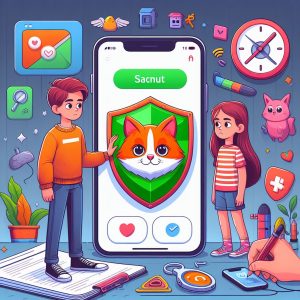
Pros and Cons of ClevGuard
Advantages of using ClevGuard’s monitoring software
Comprehensive, Reliable Monitoring Eyeguard delivers expansive visibility covering texts, 30+ social media apps, web activity and location tracking with notably accurate detection capabilities powered by machine learning technology.
Customizable Alerts
Parents can fine tune monitoring parameters, filter content types and tailor what activity triggers real-time alerts to their comfort level across both the web and social landscapes.
Real Value Pricing
At less than $10 a month for robust functionality, ClevGuard hits the sweet spot between cost and utility compared to competitors. It makes comprehensive monitoring affordable.
Intuitive Parent Dashboard The centralized portal offers intuitive data visualization making it very easy for parents to understand where children may be exposed to risks and immediately address concerns.
Limitations and drawbacks of ClevGuard’s monitoring software
Lacks Standout Features While ClevGuard checks all the boxes on core monitoring capabilities, it does not necessarily differentiate itself from competitors. Unique innovations would strengthen its value proposition.
Minimal App Blocking / Usage Controls
Basic allowances or always-on feature limiting access to certain apps would be beneficial. Currentlyparents can only monitor or set blanket time limits.
iOS / MacOS Restrictions
Monitoring iPhones is constrained and Mac monitoring quite limited relative to Android and Windows. Expanded Apple platform capabilities would prove useful.
Evolving Accuracy AI models require ongoing tuning. As new slang emerges, the system must continually train itself. Early reviews indicate some improvement needed on language processing and classification.

Conclusion
Summary of the article
In summary, while ClevGuard does not necessarily stand out compared to parental control stalwarts, its Eyeguard software offers parents a solid mix of security monitoring and oversight across devices at quite reasonable subscription rates. For budget-focused families or as a secondary protective measure, it warrants consideration.
Final thoughts and recommendations for potential users
Eyeguard provides sufficient functionality across text monitoring, web filters, social media tracking and time management controls to merit a closer look from parents seeking tools to enhance their children’s digital safety. Reasonably accurate detection technologies combined with flexible customization and sharp pricing make it a viable option to secure peace of mind.
Before purchasing, we recommend taking advantage of the 7-day free trial ClevGuard offers to fully evaluate software performance across your child’s primary devices. While gaps exist in some advanced capabilities, Eyeguard checks all the basic boxes for parents needing an extra safeguard to stem risks children face online today.
I. Introduction
The Bark app is a parental control phone monitoring app designed to help keep children safe online. As technology becomes increasingly intertwined with young people’s lives, the need for vigilant parenting extends to the digital realm. The Bark app seeks to address this by alerting parents to potential safety issues so they can have informed conversations about online activity.
Definition of Bark App
Bark is an easy-to-use phone monitoring and screen time management app for parents. It uses AI and machine learning technology to detect signs of cyberbullying, depression, online predators, adult content, drug use, and more across a child’s texts, email, YouTube, and over 30 different social media platforms.
Brief overview of its purpose and functionality
The main purpose of Bark is to monitor children’s digital footprint for early signs of safety issues. Its functionality includes:
- Scanning text messages, chat apps, social media, and other services for linguistics patterns that may indicate concerns
- Sending customizable phone alerts to parents if it detects potential issues or inappropriate content
- Providing reporting details about concerning activity and talking points for parents
- Setting screen time limits, blocking apps, filtering web content, and location tracking
- Working across iOS, Android, Windows, and Chromebook devices

II. Features of Bark App
The app offers extensive capabilities to monitor activity and help ensure kids stay safe online.
Monitoring and managing kids’ online activities
Bark performs deep scans across SMS texts, YouTube searches, emails, forums, chat rooms and over 30 social media networks to monitor children’s digital interactions for signs of cyberbullying, sexual content, depression, violence and other safety issues. Parents can view activity reports and set daily screen time limits.
Detection of potential issues such as cyberbullying, online predators, and mental health concerns
Using advanced machine learning models, Bark can automatically flag conversations that suggest cyberbullying is occurring, an online predator is targeting a child, or there are signs of anxiety, depression or suicidal thoughts based on linguistic analysis. It sends real-time alerts to parents by email or Push Notification.
Integration with various social media platforms and communication channels
Bark integrates with platforms like TikTok, Facebook, Instagram, Discord, Snapchat, WhatsApp and popular chat apps, as well as SMS texts and native iOS/Android messaging apps. This provides comprehensive monitoring across the various channels kids use daily.
III. How Bark App Works
Bark leverages powerful AI technology and a robust detection framework to keep parents informed of issues.
Overview of the technology and algorithms used
Bark uses a complex framework called Bark AI. This machine learning system is trained on over 100 million data points and uses NLP algorithms, behavioral models, heuristics, convolutional neural networks, pattern recognition and metadata analysis to understand full context in childrens’ digital communication.
Step-by-step guide on setting up and using the app
- Download the app on your child’s iOS or Android phone or tablet and create a parent account
- Adjust monitoring preferences and notifications
- Set up screen time schedules and restrictions
- Bark runs completely in the background – no need to engage with the app
- You’ll receive email alerts about concerning activity
- View detailed reporting in the parent dashboard and have discussions with your child
Compatibility with different devices and operating systems
Bark works across iOS 12 and higher including iPhones, iPads and iPods as well as Android 9.0+ phones and tablets. It also has a web dashboard for parents. Parent accounts can monitor activity across unlimited child devices.
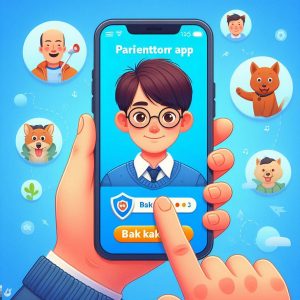
IV. Benefits of Using Bark App
Using Bark provides peace of mind to parents while fostering open conversations about online safety.
Peace of mind for parents and guardians
Bark alleviates worries by providing oversight into a previously hidden aspect of children’s lives. Its real-time alerts empower parents to address issues before they become larger problems.
Real-life examples of how the app has helped in ensuring online safety
- Alerted a parent that their teen was involved in cyberbullying another student
- Caught signs of suicidal ideation in a child’s texts and enabled the parents to get help
- Identified a predator posing as a teen friend on Snapchat
- Notified parents about underage kids accessing adult dating apps
Testimonials from users and experts in the field
Education and online safety advocates recommend Bark to monitor childrens’ communications and ensure their wellbeing in the digital age. Satisfied parent reviews on app marketplaces highlight how Bark gives peace of mind and has helped avoid troublesome situations.
V. Criticisms and Limitations
While beneficial, there are some drawbacks of the Bark phone monitoring app that should be considered.
Privacy concerns and data security
Giving an app extensive access to private communications raises privacy questions. Bark uses bank-level encryption, VPNs and data anonymization to protect personal information. Still, total data privacy is diminished.
False positive/negative alerts
Bark has very high accuracy rates, but AI technology can still get it wrong, resulting in false positives or missed detections. Parents should verify alerts.
Subscription costs and in-app purchases
While Bark offers a free trial, ongoing use requires a paid subscription ranging from $9-$99 per month based on features. Additional monitoring tools, identity protection and screen time management capabilities offered as in-app purchases also increase long-term costs.
VI. Comparison with Similar Apps
Brief overview of other popular parental control and monitoring apps
Leading alternatives include Norton Family, Qustodio, Safe Lagoon, WebWatcher, Spyzie, and mSpy. Each takes a slightly different approach but they offer the typical range of functions like activity monitoring, content filters, time limits and location tracking.
Unique selling points of Bark App
- Powerful AI detection engine trained on vast datasets
- Real-time alert notifications with talking points
- Inclusion of machine learning models tailored specifically to mental health
- Variety of pricing plans to fit different family needs
- Headspace mindfulness training and access to counselors
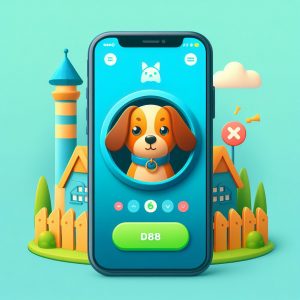
VII. Tips for Effective Use
Best practices for setting up the app
- Use Bark on childrens’ primary communication device
- Take advantage of web filters, time limits and location tracking
- Create Alert Word lists customized to child’s needs
- Make sure to continue open conversations offline too
How to have open and honest conversations with kids about online safety
- Clearly convey why you are using monitoring software – it comes from a place of caring, not control
- Discuss healthy social media habits and risky scenarios
- Encourage kids to come to you if they experience online issues
- Consider a social media contract formalizing appropriate rules and behavior
VIII. Conclusion
Recap of the benefits and potential drawbacks of Bark App
Bark offers unparalleled visibility into children’s digital worlds and leverages advanced AI to detect early warning signs of safety issues. However it does necessitate balancing protective benefits with privacy considerations.
Final thoughts on its role in ensuring a safer online environment for children
As young peoples’ lives migrate online, the need for digital vigilance is paramount. By alerting parents to risks, providing conversation starters, and discouraging harmful behaviors, apps like Bark play an integral role in fostering safer digital experiences for children. Though not a flawless solution, Bark delivers valuable security parents would not have otherwise.




























